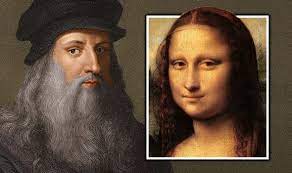
Who is Mona Lisa?
Mona Lisa’s mysterious smirk has always been fascinating to many people. Mona Lisa’s other name is La Gioconda. She’s the wife of Francesco del Giocondo. Mona Lisa is a figure of a woman, dressed in Florentine style during the era in which her image was created. Mona Lisa is seen sitting a drop a visionary mountainous landscape background. Mona Lisa’s enigmatic facial expression has always been alluring and aloof to the audiences. Thus, her image has always maintained a universal portrait reputation that lasts.
The Elements of the Image
The artwork image of Mona Lisa is comprised of oil acting as a wood material. The original painting of Mona Lisa was the first copy of the image artwork to have been released. Its size falls on 77 X 53 cm. The government of France reportedly owns the first copy of this artwork image that was released to the public. This version of the artwork can be seen on display in Louvre in Paris, France.
Leonardo’s artwork is outstandingly made in sfumato strategy, based on soft, and heavily shaded color of modeling.
Representation of the Image and Iconic Smirk
Mona Lisa’s iconic smirk has been representing the woman in the image in the same level that the Juniper branches are symbols of Ginerva Benci. The ermine of this artwork image, on the other hand, is a representation of Cecilia Gallerani in multiple portrait copies in certain cities, namely Washington and Krakow.
Mona Lisa is a symbol of visual exhibition of the concept of happiness. This concept is expressed in Italian by the word,” Gioconda.” Leonardo has intentionally focused on making the concept of happiness the sole focus of motif of the portrait artwork. This concept has always been the motivating factor that makes the image artwork so attractive and appealing for many people to look at.
The distance between Mona Lisa and the landscape becomes a nature space that Leonardo has included in the image. The painting image of the Mona Lisa was the first portrait to exhibit an imaginarily seen landscape. Leonardo has been regarded as one of the artists who first utilized the aerial concept.
Mona Lisa is physically exhibited as a lady who is someone that’s sitting in what looks like an open loggia that has dark pillar bases on both sides. Behind Mona Lisa, it can be seen in the picture that an enormous landscape looms receding in icy mountains. Winding paths and a bridge that looks like it’s been existing from a far-off distance are symbols of rare existence of human presence in the image.
The sensuous curves of the lady Mona Lisa’s hair and clothing that have been conceived with the use of sfumato are seen in the dominating existence of undulating valleys and rivers in the background. The latter images are imaginary to the views of the audiences.
The typical Da Vinci artistic works that can be obviously seen in the Mona Lisa image are the blurry outlines, graceful figure of the lady, the sharp contrasting images of light and darkness, and the generation of the general feeling of calmness from the audiences.
As Da Vinci progressively creates an expressive synthesis impression in between the lady and the landscape in the image artwork, it becomes a debatable issue as to whether or not to consider Mona Lisa as a trending portrait image. This contemplation arises out of the situation that Mona Lisa is considered an ideal lady in society, and not a real one. The faint smile or a smirk that Mona Lisa exhibits is a symbol of the existence of a connection between the human race and nature.

